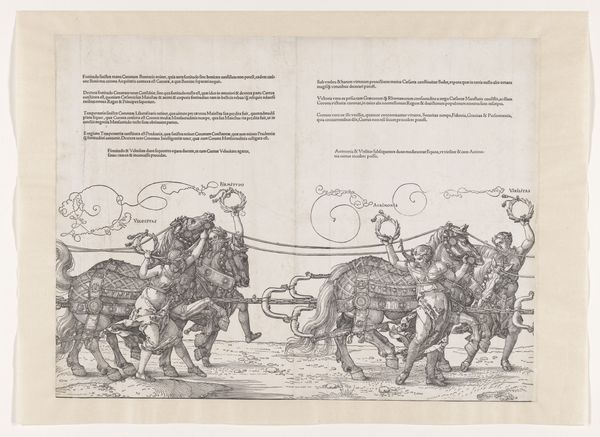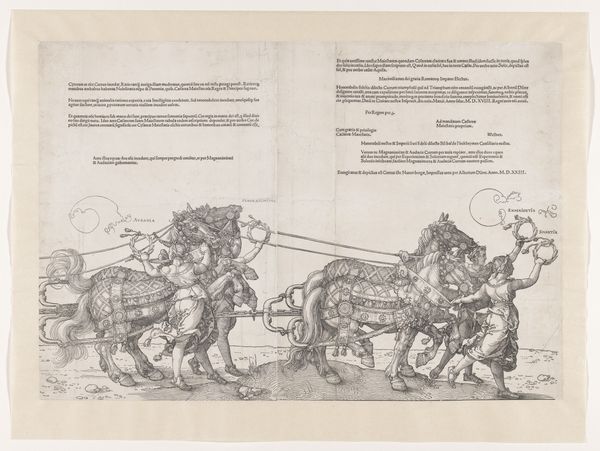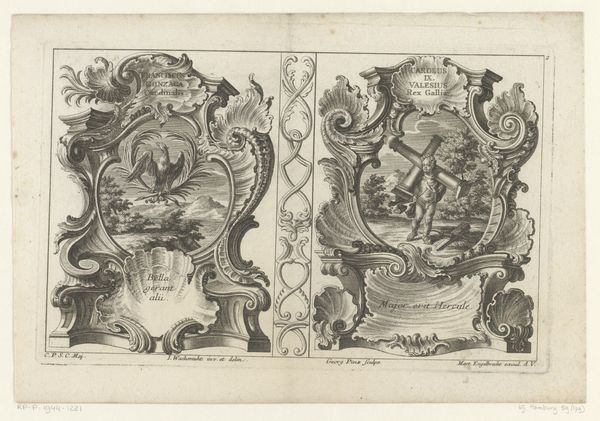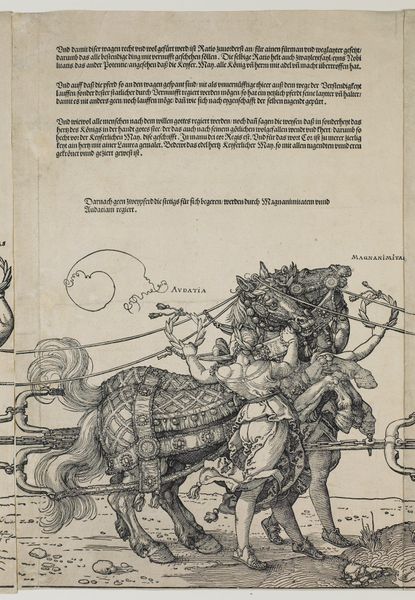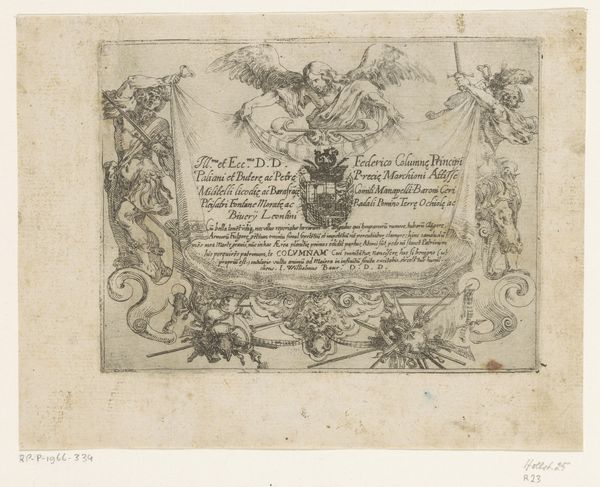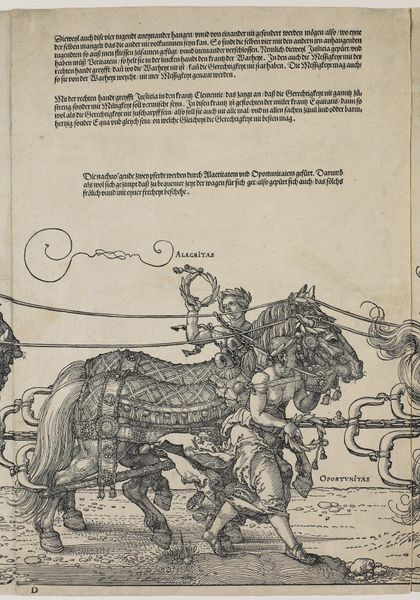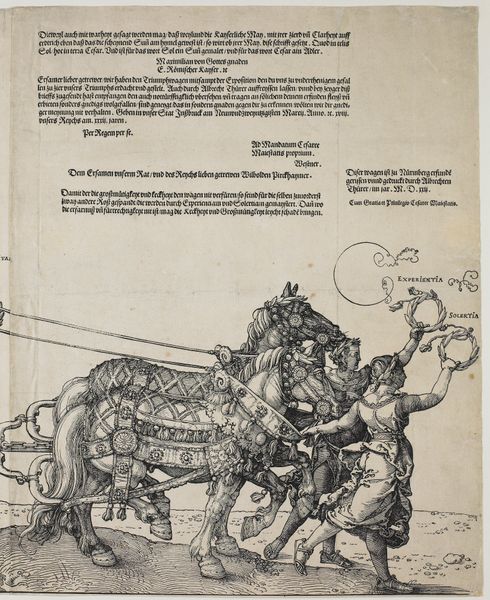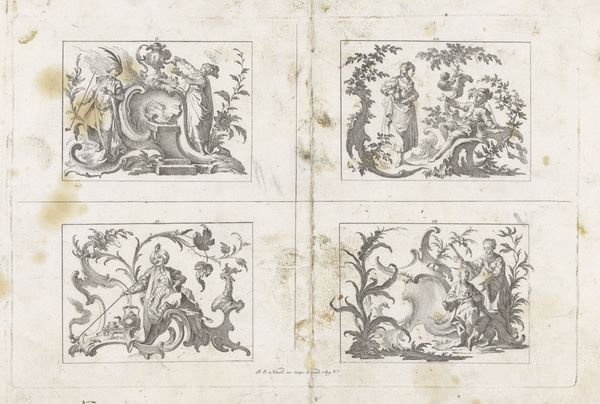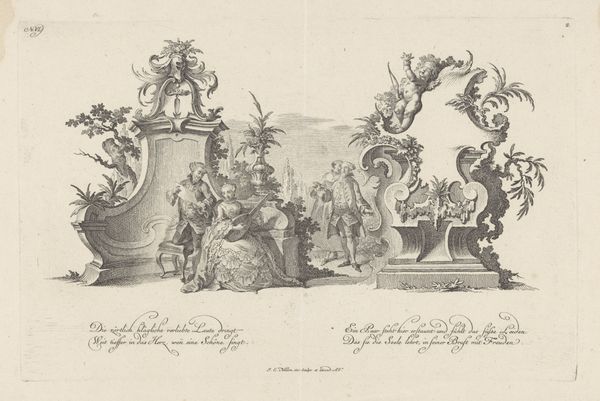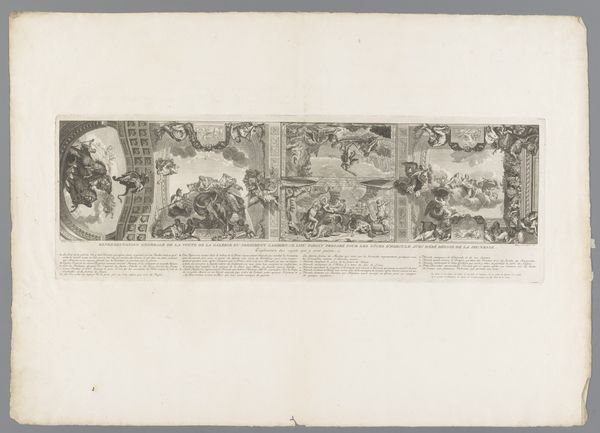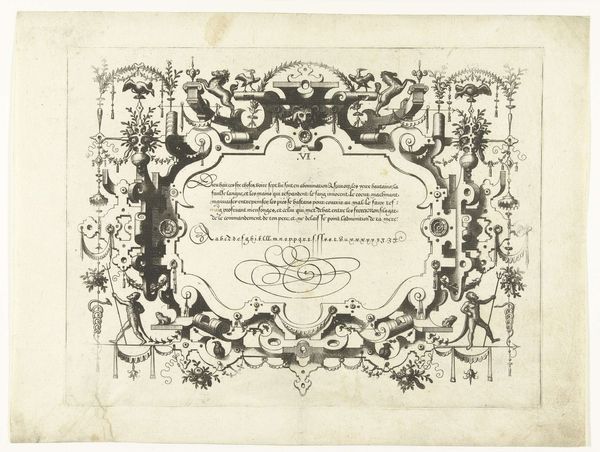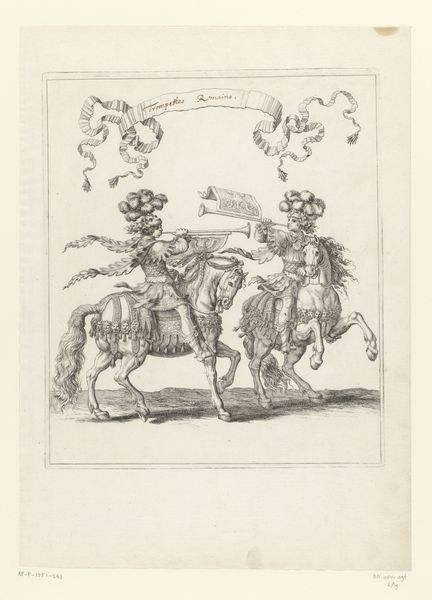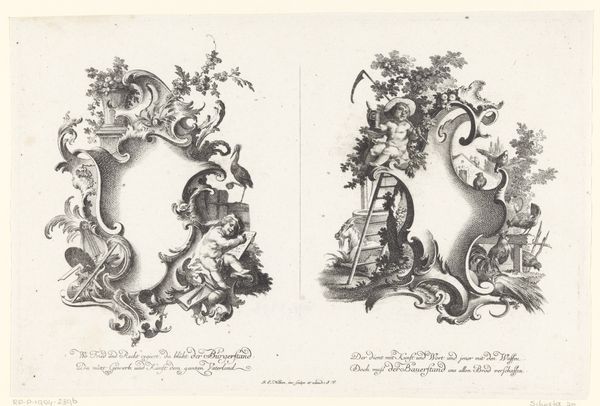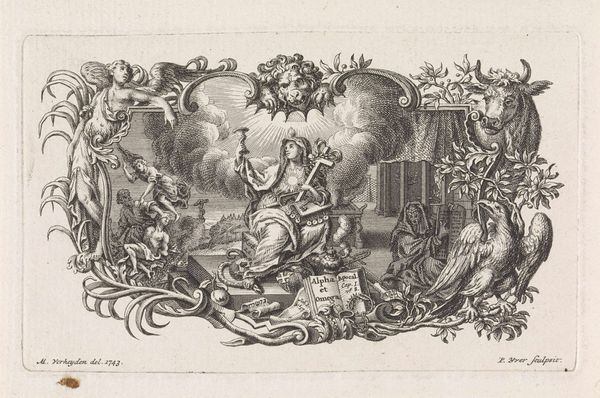
print, engraving
#
allegory
# print
#
figuration
#
11_renaissance
#
history-painting
#
engraving
Dimensions: height 415 mm, width 293 mm, height 415 mm, width 260 mm
Copyright: Rijks Museum: Open Domain
Curator: Well, isn't this something? Immediately, I see a split. One side, a bit somber and constrained; the other seems to hint at, well, some real excitement. Editor: This engraving by Albrecht Dürer, dating back to 1523, is titled "Eerste en tweede span paarden met allegorieën," housed here at the Rijksmuseum. And what you are noticing is very astute: the diptych presents a contrast between Moderation and—on the right panel—exuberant Celebration. Curator: Allegory…always a good time, isn't it? What I find captivating is Dürer's precision. It feels almost like staring into one of those super detailed dreams you have and then wake up forgetting the feeling. Except here the artist decided to memorialize his mental snapshot forever in lines. Editor: Right. This engraving served an explicitly propagandistic purpose: its composition and themes are intended to celebrate the virtues of Holy Roman Emperor Maximilian I. Looking at the figure of Moderation and her carefully controlled horses—to the contrasting horses guided by Alacritas, “exuberant joy,” we can glimpse the philosophical framework the artist wants us to ascribe to Imperial rule. It's not only effective rule, but wise and morally righteous rule! Curator: You’ve really got to admire his attention to detail—the textures he creates using solely line. Do you think he believed in all this Imperial hogwash he had etched? Because the more you stare, the more it begins to teeter, that clean cut picture of 'the moral imperative,' or the imperial self aggrandizement—almost becomes something to poke at! Editor: Whether Dürer genuinely believed every element is impossible to determine without biographical sources but his choices speak clearly of a vision where virtue leads to good governance. This kind of "virtue signaling", if you like, isn't unique to the Renaissance— it echoes right into our present. In these highly detailed textures and humanist characters you might also start to reflect how rulers—even in 2024— are mediated by imagery, constantly crafting these very controlled, symbolic self-portraits. Curator: Well, thinking about the politics, I feel less transported back to the Imperial throne of Maximillian the First and transported *forward* in time! How all the powers that be, across time, keep creating idealized images to sell a vision, which when you scratch the surface you find yourself asking "Is there anyone driving this chariot I want to follow?". Editor: It definitely provides a rich dialogue across time. And yes, still pertinent today. Curator: Timeless artistry in the details though, always a good jumping off point!
Comments
No comments
Be the first to comment and join the conversation on the ultimate creative platform.
